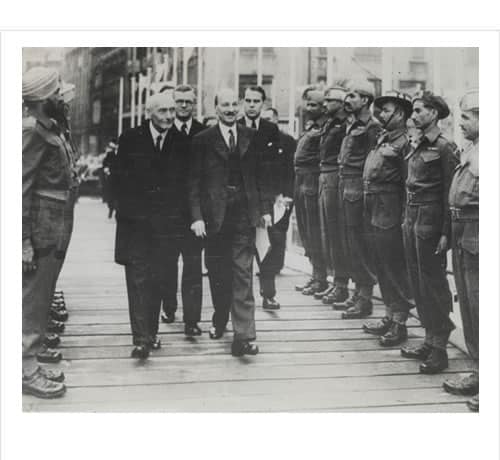by Major Douglas Messenger, late The 4th Queen’s Own Hussars
During my service in the British Army, it was my duty on many occasions to stand in the way of rioting mobs. Early in 1942, the 2nd. British Division was en-route in a large convoy of ships on the voyage around the Cape and up to the Western Desert.
The ‘Quit India’ campaign broke out and Churchill personally ordered the diversion of the Division to Bombay, where we disembarked (with much military display to advertise our arrival) as reinforcements ‘in aid of the Civil Power’, to use the army parlance in vogue at the time.
During 1942 and 1943, the Division carried out training in both Jungle and Amphibious Warfare, for eventual deployment against the Japanese. It was also on permanent stand-by for anti-riot duty.
The 2nd Reconnaissance Regiment, in which I was serving, was well-suited to such duty as it was composed of both armoured scout cars and Assault-Troops mounted in armoured personnel carriers. It could thus deploy quickly and safely to any trouble spot. So, we frequently found ourselves standing in front of hyped-up and violent rioting mobs, whose blood-lust had been whipped-up by Congress agitators.
The unfortunate actions of the much-maligned General Dyer at Cawnpore, in 1926, had resulted in a host of regulations for dealing with politically inspired unrest in the Raj. There was a ‘Drill’ for every eventuality.
When he received intelligence that a riot was brewing, the local Chief of Police would approach the nearest Magistrate and request him to declare a State of Emergency. This done, he would then call upon the Military for assistance. A decision would then be taken as to a suitable site upon which to quell the riot and prevent the mob from reaching their objective.
The combined force of soldiers and policemen would then converge upon this site, accompanied by the Magistrate. The police would have a large banner, bearing a message in English and the Vernacular, stating that the rioters must disperse on pain of death: the troops would include a trumpeter or bugler to sound a warning: and the Magistrate would have a loud hailer to read the ‘Riot Act’. On arrival at the selected position, the Assault Troops would dismount from their vehicles and form up in a suitable position.
The police Riot Squads would form up behind the soldiers and the armoured vehicles would be positioned in sight behind them. As the Mob approached, the soldiers would make much of their drill to load rifles and fix bayonets; and would adopt the aggressive ‘on guard’ position. The riot police would be armed with ‘lathis’, which were long iron-bound staves, similar to Friar Tuck’s quarter-stave but longer and more lethal.
For their part, the rioters would be armed with machetes, bill hooks, clubs and brickbats. On some occasions, they might also hurl bottles of sulphuric acid and fire off an ancient shotgun or two. The Molotov cocktail had not then come into general use.


